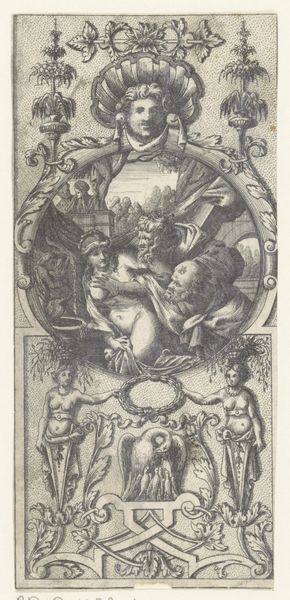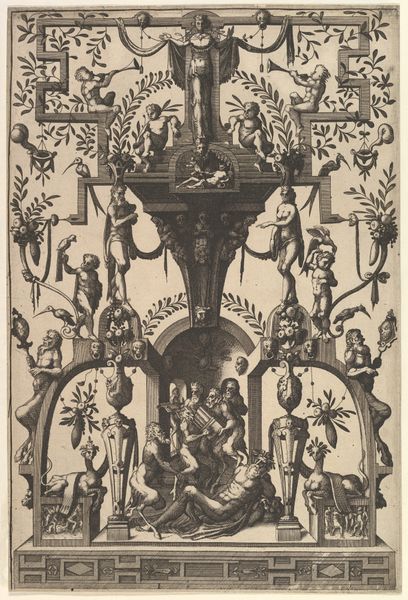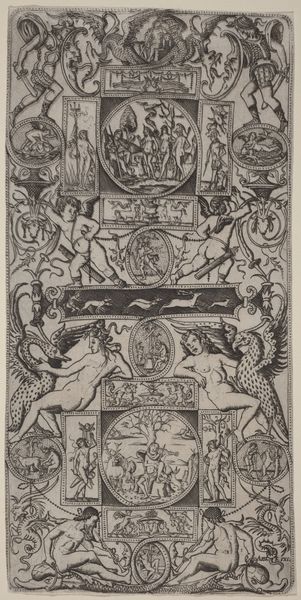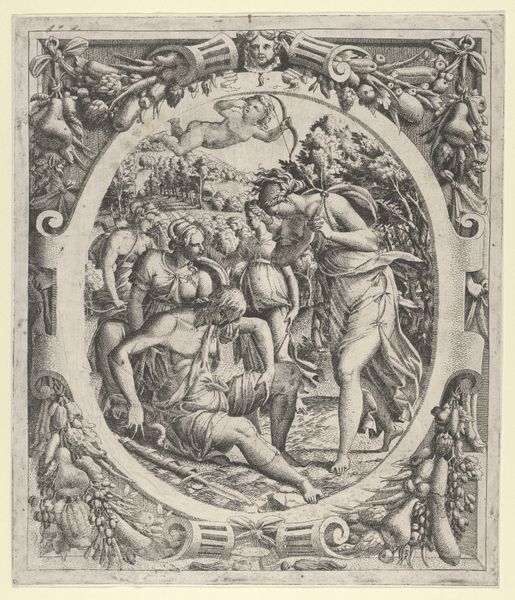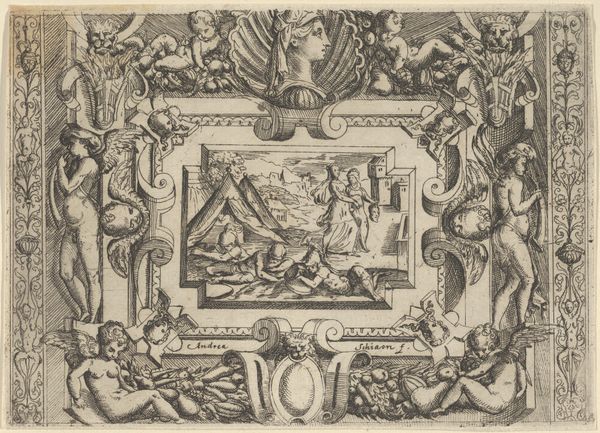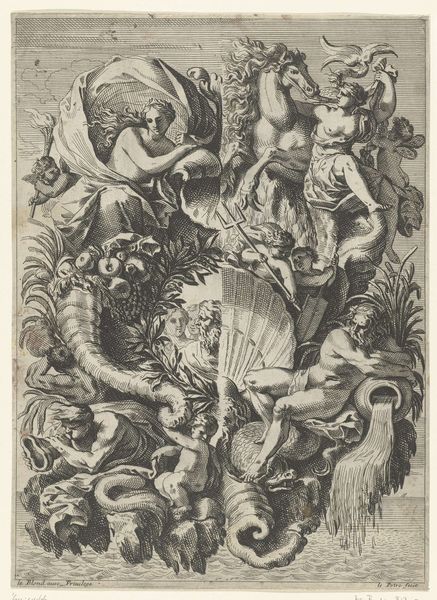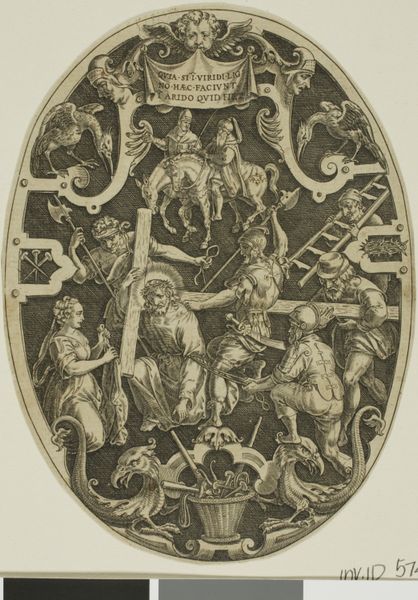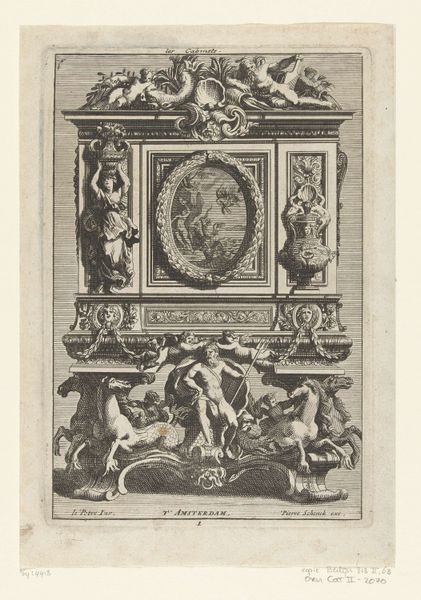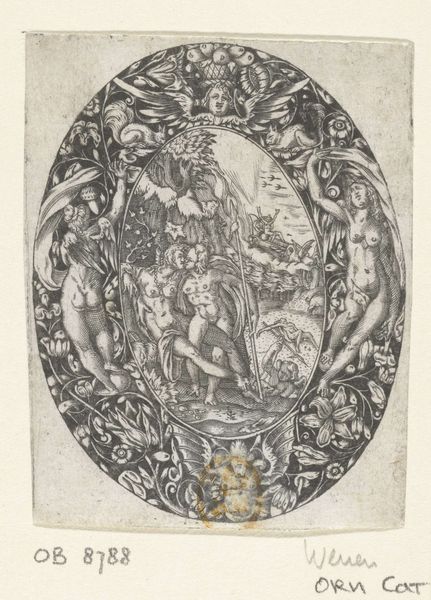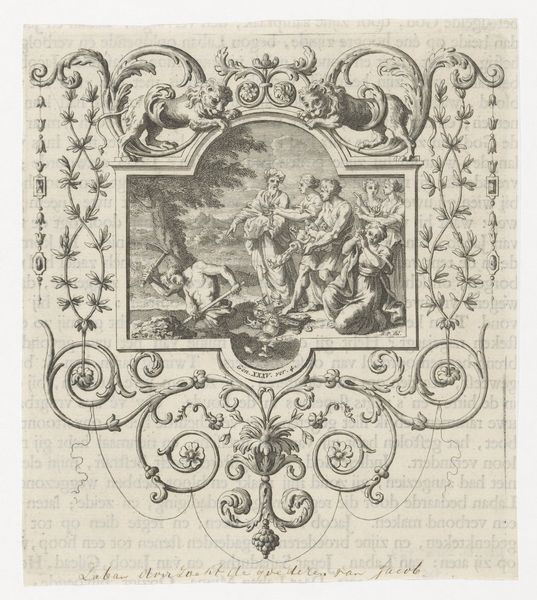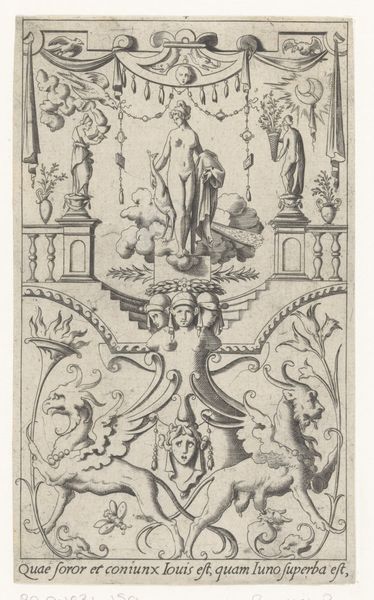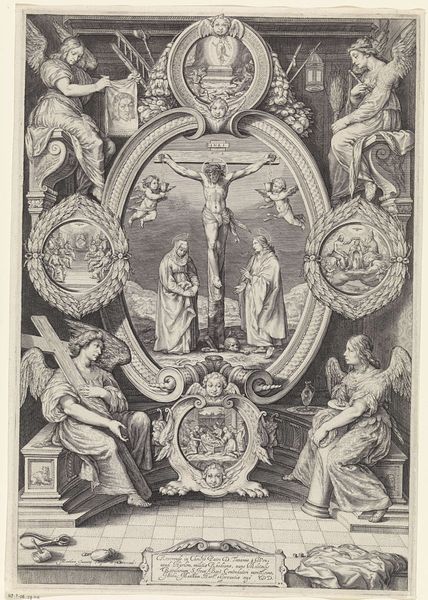
drawing, print, ink, engraving
#
drawing
#
ink drawing
#
allegory
#
pen drawing
# print
#
pen illustration
#
pen sketch
#
classical-realism
#
figuration
#
11_renaissance
#
ink
#
line
#
engraving
Dimensions: height 227 mm, width 147 mm
Copyright: Rijks Museum: Open Domain
Curator: This print, attributed to René Boyvin, is titled "Neptunus en Thetis," dating back to after 1551. The engraving captures a dynamic scene. What strikes you initially? Editor: Chaos. It's a swirling vortex of bodies and textures, a kind of claustrophobic fantasy scene rendered with impressive precision. The lack of color amplifies the dramatic tension—the artist seems determined to pack every inch with detail. Curator: The classical theme, Neptunus and Thetis, draws on a wellspring of mythological significance. Neptune, god of the sea, and Thetis, a sea nymph, are central. Think about the long cultural memory invested in this imagery – the sea representing both power and danger, the alluring nymph promising favor but capable of deception. Boyvin plays with established iconography. Editor: Absolutely. It feels like the artist is intentionally playing with themes of power, eroticism, and the uncontrollable forces of nature. Are those the spoils of maritime conquests at the base of the circle? Broken rudders, anchors… the sea as both provider and destroyer feels palpable. How do you read Thetis' role? Curator: Thetis embodies transformation, often escaping capture by shifting forms. Notice her almost languid posture contrasting with Neptune’s muscular build and urgent grip. She's powerful in her elusiveness. Even the surrounding figures, some human, some monstrous, represent various facets of the sea. The symbols of tridents and sea creatures reinforce that ancient association. Editor: I’m curious about the implications of centering these figures within such a tightly packed frame. The composition nearly suffocates the characters, pushing toward a certain unease, a sense of environmental anxiety almost, which might be quite potent if seen through today’s ecological lenses. Curator: That's a brilliant observation. Placing this artwork, and its classical maritime imagery, in contemporary discussions about our damaged aquatic ecosystems makes it resonate in very interesting ways. It emphasizes our long, fraught relationship with the natural world. Editor: Looking at the overall work now, the dramatic visual vocabulary establishes links with mythology while offering new avenues for contemporary discussions around nature and its exploitation. Curator: Indeed. It’s a work that speaks to both its time and ours. The power of symbols endures, evolving with each new layer of interpretation.
Comments
No comments
Be the first to comment and join the conversation on the ultimate creative platform.
